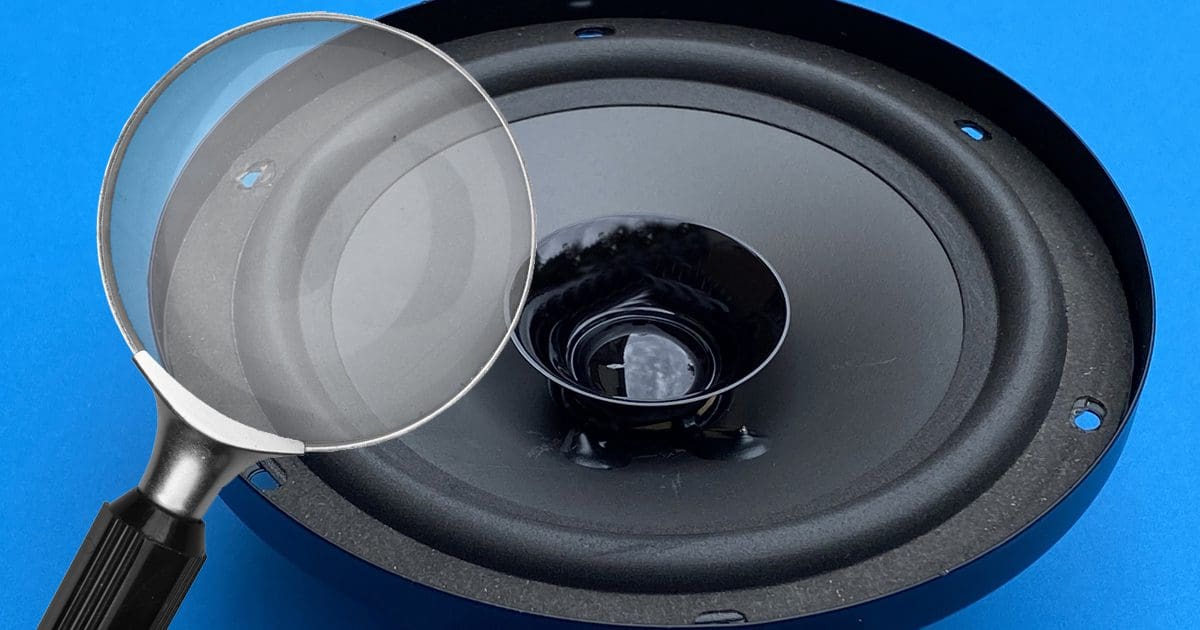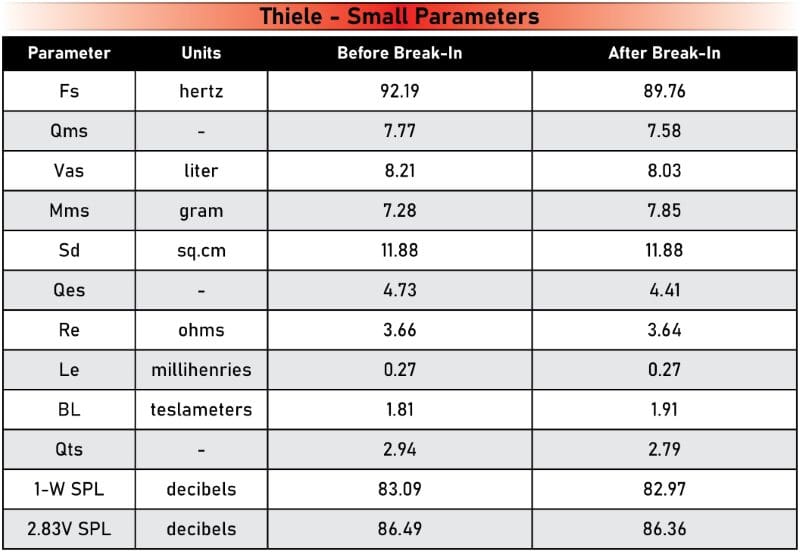A while back, we took a close look at the harmonic distortion performance of a 6.5-inch door speaker from a Honda Civic. We measured the Theile/Small parameters and the driver’s impedance curve. Next, we looked at how much distortion the speaker created at different drive levels. If you haven’t read that article, it’s a bit of a prerequisite for this one. You can find it here: https://www.bestcaraudio.com/understanding-speaker-quality-oem-speakers/
In this article, we will do the same analysis on a very inexpensive dual-cone replacement speaker called the AW-660SP. This speaker doesn’t have a tweeter but instead includes a small V-shaped cone attached to the center of the speaker, often referred to as a Whizzer cone. The primary purpose of a Whizzer cone is to improve high-frequency output. More specifically, the small diameter helps improve off-axis high-frequency performance. In a different article, we’ll look at how the cone affects off-axis performance.
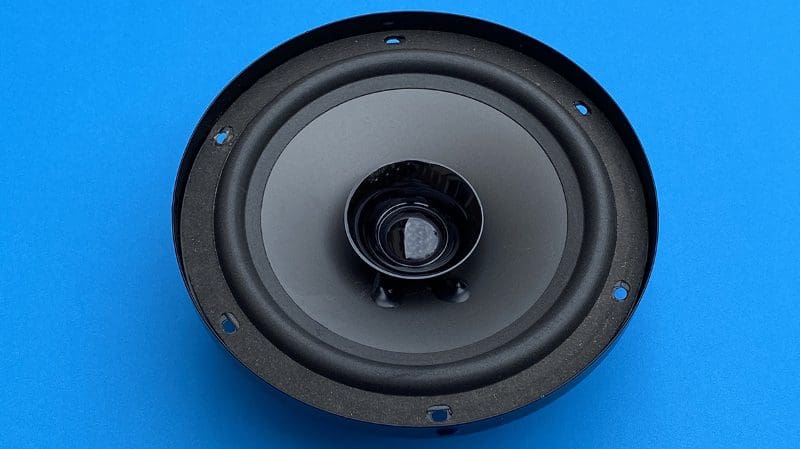
The speaker is based on a thin-gauge stamped steel basket. Given the mounting hole locations and overall diameter, it would be better to describe this as a 6-inch speaker than a 6.5-inch class driver. The woofer cone is injection-molded polypropylene, and its outer edge is attached to the basket with a closed-cell foam surround. The driver is rated to handle 30 watts of power.
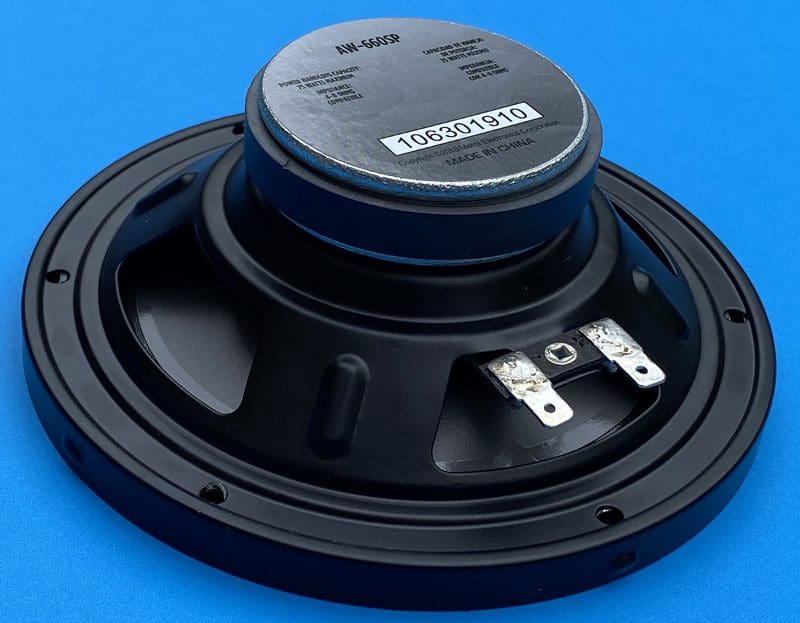
Thiele/Small Parameter Measurements
After experiencing ongoing software and customer service frustrations with my Clio Pocket, I purchased a used Smith & Larson Woofer Tester II to make Thiele/Small measurements. I’ve been using their Woofer Tester products for decades and love their speed and accuracy. Using the added-mass method to calculate driver compliance, I measured the following Thiele/Small parameters.
Any time I have a brand-new driver in the lab, I measure the parameters fresh out of the package and again after 10 to 15 hours of breaking in to see whether the specifications change. There’s nothing wrong with the values changing. I like to know’ whether they do so I can share that information with our readers. This driver didn’t change as the Fs dropped from around 92 hertz to just under 90, and the Vas decreased from 8.21 to 8.03 liters.
It’s worth noting that this speaker has the highest Qts I’ve measured to date at 2.79. This will produce a bump in the low midbass frequencies even with modest power as this is intended as an affordable OE replacement driver; that likely isn’t a bad thing as it will add some warmth to the sound. This isn’t suitable for any sound quality or audiophile application.
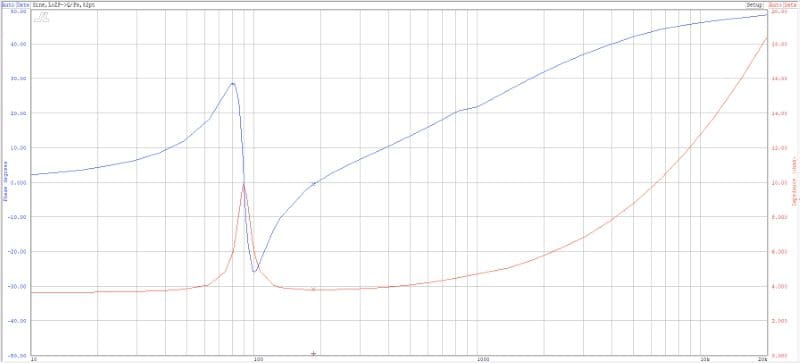
The impedance graph shows the moderately wide spike at the driver’s resonance frequency and a slight shift in the phase response plot between 800 and 1 kHz.
I finished the bench evaluation by simulating the speaker functionality in a 3-cubic-foot sealed enclosure that would mimic the effectively infinite baffle door mounting location. As mentioned, the extremely high Qts value of the driver shows up as a bump in the response just above 100 Hz.
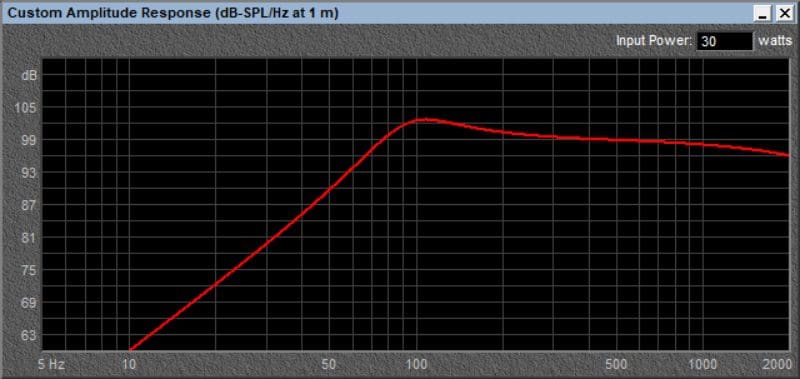
Measuring Speaker Distortion at Different Drive Levels
In my last test of the Honda speaker, I placed the microphone 1 meter from the cone. Unfortunately, I am testing in a large room, not an anechoic chamber. As such, some reflections have to be dealt with. Of note, the Honda speaker test shows a significant dip in the response around 130 hertz. That isn’t a characteristic of the speaker – it’s a cancellation in the room. For this test, I moved the microphone closer to the speaker cone. Specifically, it’s 17 cm away from the mounting surface. This is closer to a near-field measurement and results in a smoother response through the midbass region. This change in measurement distance means you can’t compare the output levels of the two drivers. The distortion characteristics will remain accurate for the different drive levels. I think I’ll revisit the Honda speaker and clone the measurements used in this article.
I took the first sweep with the system calibrated to produce a drive level of 0.1 watt or -9.97 dBW.
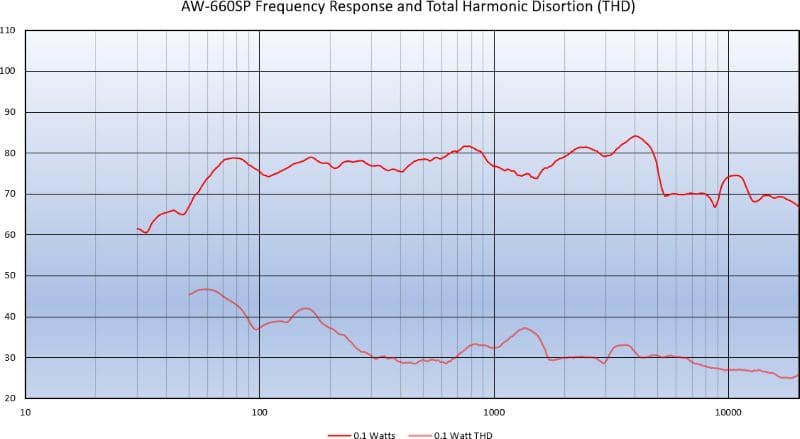
If you think worrying about source units, processors and speaker quality is essential to creating an audio system that sounds amazing, you might want to think about speaker quality. With only 1/10th of a watt, we see distortion levels 50 dB below the fundamental in the midrange and 35 dB below the bass range. Let’s look at the distortion levels in percentage values at several frequencies. At 50 Hz, the little woofer produced 8.56% distortion. Up at 200 Hz, the distortion dropped to 1.05%. In the upper midrange at 500 Hz, distortion was 0.35%. At the top end of the useful range of a midrange driver of this size, I measured 0.32% and 0.22% distortion at 2 kHz and 4 kHz, respectively.
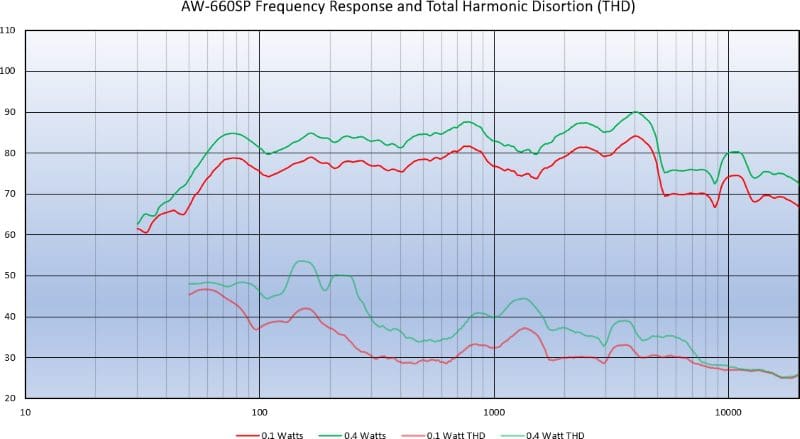
I increased the output of the amplifier by about 6 dB to deliver 0.407 watt or -3.9 dBW and repeated the frequency response and distortion sweep. It’s pretty easy to see that things got worse, especially at 60 and 70 through 80 hertz. If the speaker were perfectly linear, the lower trace THD trace would increase by 6.07 dB as the upper trace. Our distortion numbers at 50, 200 and 500 hertz are 5.04, 1.77 and 0.31%, respectively. High-frequency distortion was 0.40 and 0.21% at 2 and 4 kHz.
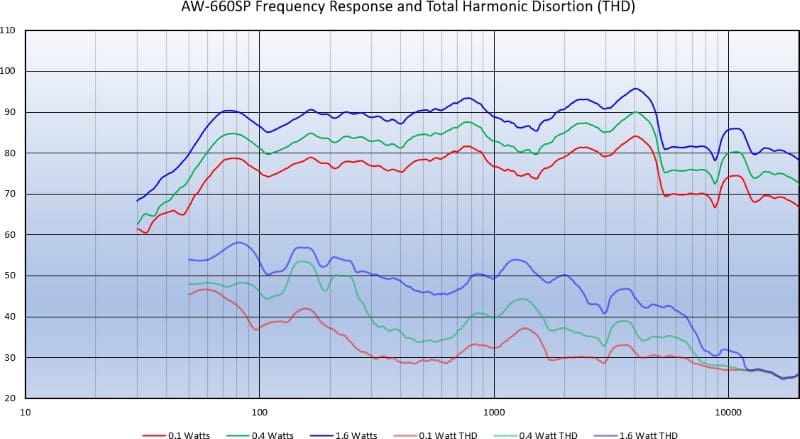
I increased the output level by another 7 dB to 1.61 watts. This time, distortion in the higher frequencies increased significantly relative to the bass and midbass frequencies. Now we have 5.18, 1.8 and 0.59% at 50, 200 and 500 hertz. At 2 kHz, distortion was 0.93 and 0.26 at 4 kHz. It was getting easier to hear that the speaker wasn’t enjoying this drive level, and we were barely over 1 watt of power. How about we bump it up again by another sixish decibels?
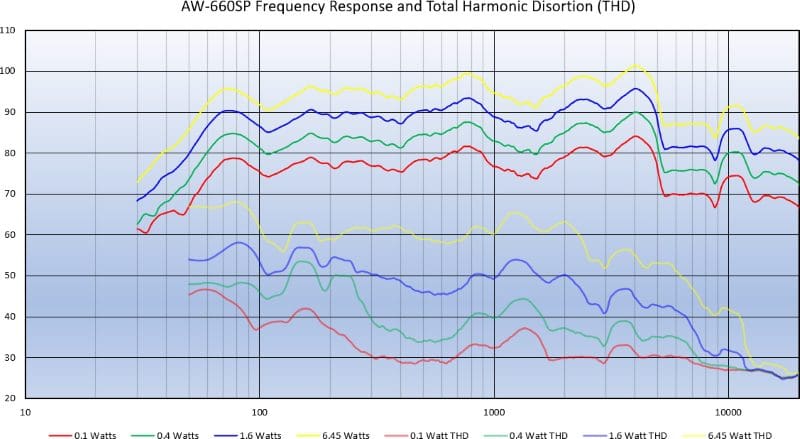
Things start to go south with a mere 6.45 watts driving this little woofer. We have 11.91% distortion at 50 Hz, 1.67% at 200 Hz and 1.36% at 500 Hz. The upper midrange got quite upset with 2.12% THD at 2 kHz and 0.42% THD at 4 kHz. It wouldn’t be any stretch to say that this speaker was quite upset with this power level.
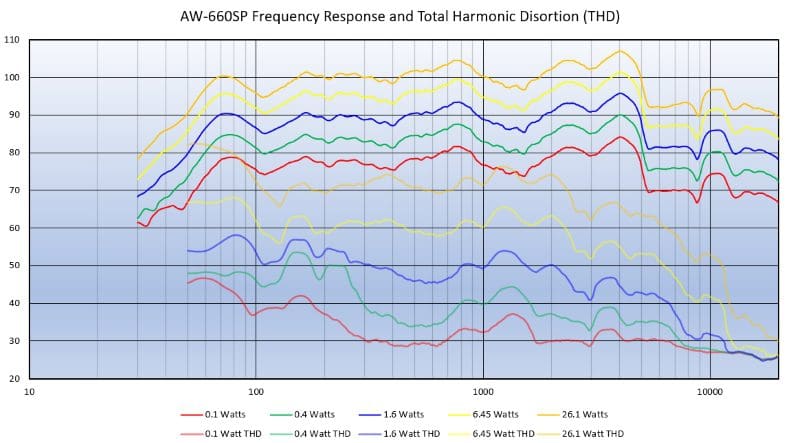
It should be no surprise that things get much worse with an extra 20 watts of power. Distortion numbers are now at 38.19, 2.98, 2.85, 3.85 and 0.86% at our respective test frequencies. It was really easy to hear that this driver was NOT enjoying being driven with this much power, especially at lower frequencies.
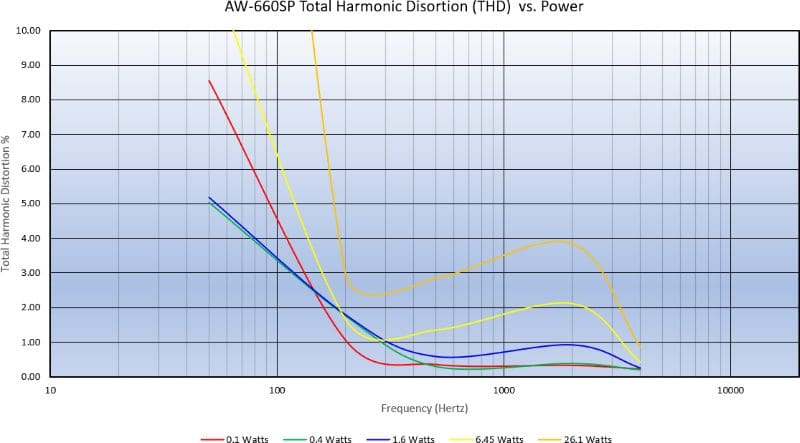
Can you imagine how harsh this speaker would sound with more than 2% distortion at 2 kHz when driven with just over 6 watts of power? That would produce 4 and 6 kHz harmonics at a combined level that was only 34 dB below the 2 kHz fundamental. That’d be clearly audible and quite nasty. At 100 Hz, this driver would produce 200 and 300 Hz content, only 30.2 dB (3.09% THD) below the fundamental. Talk about making your music sound muddy!
It’s clear that given the price point and design, this speaker wasn’t designed as a high-performance upgrade. If you’re on a tight budget and need something to replace a damaged or blown speaker, it’s a valid option and is precisely what it was designed for. It would probably be fine if you want to listen to an FM talk radio or AM station. If you want to crank your music and enjoy it at concert-like levels, this isn’t the speaker for you.
